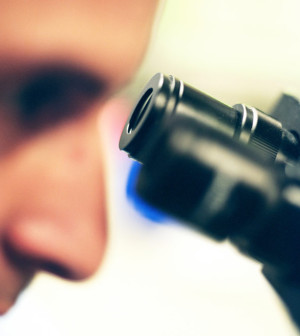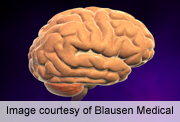- Skip Storing This Everyday Product in the Fridge Door
- Green Tea + B3 Pairing May Boost Brain Health
- Navigating Your Midlife Crisis: Embracing New Possibilities
- City Raccoons Showing Signs of Domestication
- Mapping the Exposome: Science Broadens Focus to Environmental Disease Triggers
- One Week Less on Social Media Linked to Better Mental Health
- Your Brain Changes in Stages as You Age, Study Finds
- Some Suicide Victims Show No Typical Warning Signs, Study Finds
- ByHeart Formula Faces Lawsuits After Babies Sickened With Botulism
- Switch to Vegan Diet Could Cut Your Greenhouse Gas Emissions in Half
Gene Therapy May Hold Promise for Advanced Parkinson’s Disease


A new, preliminary treatment involving triple-gene therapy appears safe and effective in helping to control motor function in Parkinson’s disease patients, according to new research.
The therapy, called ProSavin, works by reprogramming brain cells to produce dopamine, the chemical essential for controlling movement, the researchers said. Lack of dopamine causes the tremors, limb stiffness and loss of balance that patients with the neurodegenerative disease suffer.
“We demonstrated that we are able to safely administer genes into the brain of patients and make dopamine, the missing agent in Parkinson’s patients,” said researcher Kyriacos Mitrophanous, head of research at Oxford BioMedica in England, the company that developed the therapy and funded the study.
ProSavin also helps to smooth out the peaks and valleys often produced by the drug levodopa, the current standard treatment, Mitrophanous said.
The treatment uses a harmless virus to deliver three dopamine-making genes directly to the area of the brain that controls movement, he explained. These genes are able to convert non-dopamine-producing nerve cells into dopamine-producing cells.
Although the study results are promising, the researchers suggest they should be “interpreted with caution” because the perceived benefits fall into the range of “placebo effect” seen with other clinical trials.
Hoping to improve on their results, the researchers have since re-engineered the therapy. “We have a new version which makes more dopamine in patients, and this new version is undergoing safety studies before we initiate trails in patients,” he said.
Experts reacted positively but cautiously to the findings, which were published online Jan. 10 in The Lancet. While the treatment seems safe, its potential as a replacement for current therapy still must be proved, they noted.
“The ProSavin study was a positive and important first step for a potential gene therapy for Parkinson’s disease,” said Dr. Michael Okun, national medical director at the National Parkinson Foundation. “The results of this preliminary study revealed a promising safety profile, and it will be interesting to observe longer-term benefits and how ProSavin will compare to other therapies such as deep brain stimulation.”
Mitrophanous thinks this new treatment will eventually outperform deep brain stimulation or levodopa.
Over time, patients need larger doses of levodopa. Its benefit starts to wear off five to 10 years after starting the drug, he said.
Patients can then try deep brain stimulation, which involves putting wires into the brain that are attached to a battery pack, Mitrophanous said.
“With our approach, the brain cells are permanently modified to make their own dopamine, so you wouldn’t have to rely on external stimulation,” he said.
The researchers don’t say new this therapy is a cure, because brain cells continue to die. “But the hope is that we would give patients an additional five years before the disease progresses further,” Mitrophanous said.
“If you imagine you get five to 10 years of good control of symptoms with levodopa, we hope we would lengthen that. An extra five years, maybe longer, would be a real benefit to these patients,” Mitrophanous said.
Dr. Andrew Feigin, a neurologist at the Movement Disorders Center of the Cushing Neuroscience Institute in Manhasset, N.Y., said the study adds to growing evidence that “gene therapy for Parkinson’s disease can be undertaken in a safe and well-tolerated manner.”
But the findings can’t be considered conclusive because the trial did not include a placebo or sham procedure, he said.
For the study, Mitrophanous and his colleagues tried three doses of ProSavin in 15 Parkinson’s patients who no longer responded well to other treatments. They rated the patients’ response on a scale that measures speech, tremors, rigidity, finger taps, posture, gait, and slow movement.
All patients showed significant improvements in motor scores in the 12 hours after they stopped taking their other medications and at six months and a year after surgery, the researchers found.
“It appears that the highest dose of ProSavin provided the greatest level of dopamine production,” Mitrophanous said. This led to the greatest improvement in motor scores and consistently less need for levodopa, he said.
Patients injected with ProSavin had mild to moderate side effects. The most common while on medication were involuntary movements (dyskinesias) and switching between mobility and immobility, called on-off phenomena, which occurs as levodopa wears off.
Parkinson’s disease affects some 5 million people worldwide.
More information
For more information on Parkinson’s disease, visit the National Parkinson Foundation.
Source: HealthDay
Copyright © 2025 HealthDay. All rights reserved.










